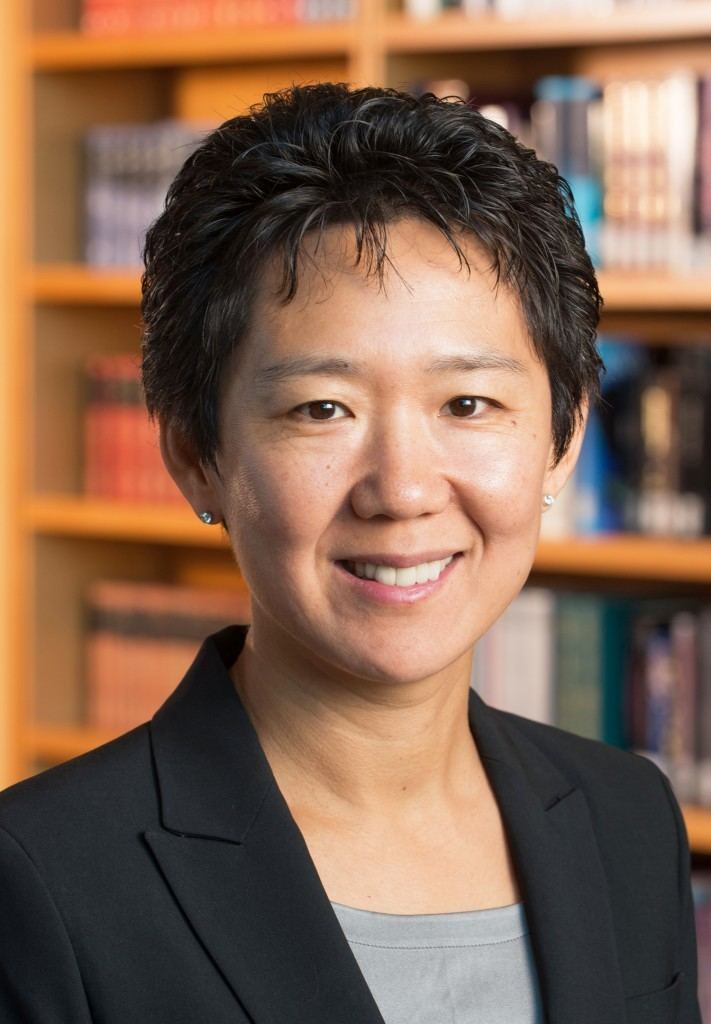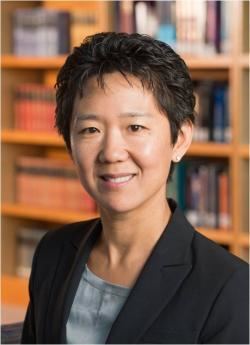Nationality United States Doctoral advisor Andrew W Murray | Name Rong Li | |
 | ||
Alma mater Yale University (B.S., M.S.)University of California, San Francisco(Ph.D.)University of California, Berkeley(Postdoctoral Fellowship) Known for Cell biologyCellular asymmetryCell dynamicsAneuploidyCell morphologyEukaryotic cellsOogenesisCell migration Notable awards Bloomberg Distinguished Professorships (2015)William Neaves Award (2010-2012)Hoechst Marion Roussel Award (now the Aventis Award) (1999-2001) | ||
tomorrowsdiscoveries from dysfunctional cells to disease dr rong li
Rong Li is a Bloomberg Distinguished Professor of Cell Biology and Chemical & Biomolecular Engineering at the Johns Hopkins School of Medicine and Whiting School of Engineering. She is also the Director of the Center for Cell Dynamics in the Johns Hopkins School of Medicine’s Institute for Basic Biomedical Sciences. She is a leader in understanding cellular asymmetry, division and evolution, and specifically, in how eukaryotic cells establish their distinct morphology and organization in order to carry out their specialized functions.
Contents
- tomorrowsdiscoveries from dysfunctional cells to disease dr rong li
- Biography
- Research
- Publications
- References

Biography
Rong Li was born in Beijing, China in 1967. She was the first high school graduate from the People’s Republic of China admitted to Yale University. She went on to graduate in four years from Yale University Summa Cum Laude and with Distinction in Major with a combined B.S. and M.S. in Biophysics & Biochemistry. She then earned a Ph.D. in Cell Biology through the Herbert W. Boyer Program in Biological Sciences (PIBS) at the University of California, San Francisco, and subsequently completed a postdoctoral fellowship at the University of California, Berkeley in Molecular Cell Biology. In 1994, she accepted an assistant professorship in cell biology at Harvard University, rising to the associate level in 2000. From 2005-2015, she was an Investigator at the Stowers Institute for Medical Research and an affiliated Professor in the Department of Molecular and Integrative Physiology at the University of Kansas School of Medicine.
In July 2015, Li was named a Bloomberg Distinguished Professor at Johns Hopkins University for her accomplishments as an interdisciplinary researcher and excellence in teaching. The Bloomberg Distinguished Professorship program was established in 2013 by a gift from Michael Bloomberg. Li holds appointments in the Johns Hopkins School of Medicine’s Department of Cell Biology and the Whiting School of Engineering’s Department of Chemical and Biomolecular Engineering. She also serves as the Director of the Center for Cell Dynamics in the Institute for Basic Biomedical Sciences, which is led by molecular biologist and geneticist Dr. Stephen Desiderio. As director, she will deepen the existing collaboration between the Schools and Engineering and Medicine and provide new tools and approaches to examine the dynamic processes that underlie the lives of cells, moving beyond the parts list that the human genome provides to a mechanistic understanding of the molecular events underlying complex behaviors. As part of the Bloomberg Distinguished Professorship, Li will be teaching an undergraduate course in the Department of Chemical and Biomolecular Engineering.
Research
Rong Li is an accomplished investigator in the area of cell dynamics – the interrogation of biological function at the highest possible resolution in space and time. Li’s research has entailed integrative approaches, encompassing biochemistry, genetics, quantitative imaging and fluorescence spectroscopy, mathematical modeling, quantitative genomics and proteomics.
To understand the pathways that control cell motility, tissue morphogenesis, and neuronal development, Li monitors both physical and biochemical reactions that overlap spatially and change rapidly, but occur only locally within a complex environment. Her broad goal is to understand how eukaryotic cells establish their distinct morphology and organization in order to carry out their specialized functions with applications in development and cancer. Specifically, how eukaryotic cells generate pattern through self-organization with or without environmental cues, accomplish division or motility through coordinated structural rearrangements and force production, and, when challenged with stress and roadblocks, evolve innovative solutions to main vitality and functionality. A key part of her research is exploring how the ability to evolve is built into cellular systems and how that ability gives rise to a cell’s properties. Li has published several seminal papers on the impact of aneuploidy on cellular fitness, gene expression, stress adaptation, and genome instability. As aneuploidy and chromosome instability are hallmarks of cancer, her results on how aneuploidy fuels the evolution of cellular adaptation and drug resistance have direct relevance to the understanding of cancer evolution and disease progression. Li has also studied the molecular mechanisms that lead to oocyte maturation, which can contribute to “advances in the treatment of infertility and the field of regenerative medicine.”
Her early work with Andrew Murray at Harvard University provided the first insight into the genetic basis of the spindle assembly checkpoint. The paper documenting this work is one of the Nature Milestones in Cell Division. Li has subsequently made a number of significant discoveries in the area of mitotic exit control and cytokinesis. She is recognized as a leader in the study of cell polarity in the context of morphogenesis and asymmetric cell division, and has been at the forefront of using mathematical and biophysical approaches to understand cell polarity as a self-organizing, dynamical system. This advancement of quantitative and predictive understanding of cellular behavior relates to health, to learning and to human individuality, especially her research on topics such as cell polarity, asymmetric cell division, polycystic kidney disease, and adaptive evolution.
Li was also one of the first to demonstrate the critical in vivo role for the Arp2/3 complex and WASP family proteins in the control of actin filament assembly, and to show through in vitro biochemistry that the Arp2/3 complex is an actin nucleator activated by WASP family members. In collaboration with structural biologists, her laboratory determined the three-dimensional structure of the Arp2/3 complex in actin branch junctions. Li’s recent work has revealed insights into the in vivo function of Arp2/3-nucleated dendritic actin network in mammalian asymmetric cell division and cell motility.
A more recent area of research has been the examination of autosomal dominant polycystic kidney disease. Li’s lab was the first to propose, based on both experimental evidence and computational modeling, that the autosomal dominancy of this disease can be a result of positive feedback loops in inflammatory cytokine signaling and polycystin regulation, as opposed to obligatory second-hit mutations. They have also identified a tissue hypertrophy pathway as the direct downstream target for the mechanosensory activity of polycystins.
Publications
Li has more than 140 publications, 10,000 citations in Google Scholar and an h-index of 54, with many of her papers appearing in top journals such as Cell, Nature, Cell Biology International, Nature Communications, Journal of Cell Biology and the Proceedings of the National Academy of Sciences of the United States of America.
